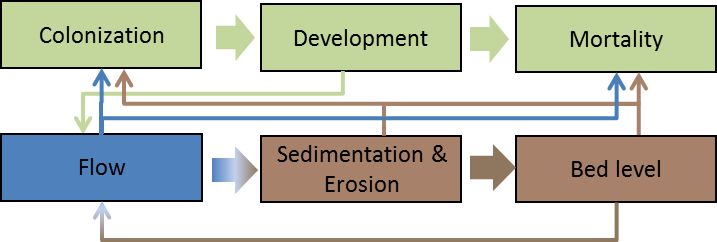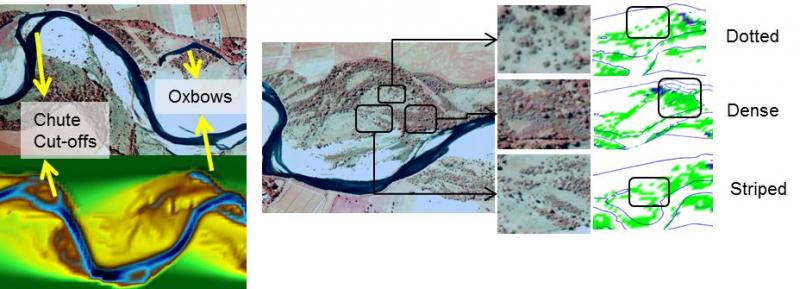About "PhD research in REFORM"
In the newsletter items dedicated to PhD research in REFORM, PhD students introduce the topic and the initial results of their research.
Introduction
Vegetation and hydro-morphodynamics interact dynamically in rivers and river floodplains. These interactions create complex habitat mosaics supporting a large diversity of plants and animals. Numerous studies have described the links between biological and physical characteristics of rivers, but these are mainly empirical in nature and the underlying processes are known only in outline. The current scientific understanding of these dynamic interactions is still limited, especially at quantitative levels and when it comes to incorporating this understanding in predictive models of floodplain ecosystem development for river management. Recent models contain complex hydro-morphodynamics but address vegetation in a rather simplistic manner. Vegetation is usually represented as static cylinders that do not grow or die.
Objectives
We have developed a model that contains dynamic vegetation processes like colonisation, growth and mortality. With this model, we are at the point of creating more realistic patterns in fluvial morphology and vegetation. The objective of this study is to use this model to identify the key processes that create patterns in vegetation and fluvial morphology. The model will be able to support river managers in the design and long term prediction of ecological restoration measures.

Figure 1: Flow diagram of model processes and interactions (figure: Mijke van Oorschot)
Approach
We coupled the hydro-morphodynamic model Delft3D to a new dynamic vegetation model (Fig. 1). Colonisation depends on water levels and timing of seed dispersal. Plants can grow and interact with hydro-morphodynamic processes (flow resistance) or die due to flooding, desiccation, burial and scour. At the moment we have included two Salicaceae species Salix and Populus because of their ecosystem engineering properties. Additionally, other riparian vegetation types can be included containing different characteristics which can change over time.
Preliminary results
The model produces realistic patterns in fluvial morphology (e.g. chute cut-offs and oxbow lakes) and vegetation (spotted, striped and dense, Fig. 2). Also, by testing different scenarios without vegetation, with static vegetation (vegetation does not grow or die) and dynamic vegetation of the Allier River, we found that only by including dynamic vegetation active meandering behaviour is maintained after 150 years.

Figure 2: Model results for simulations of the river Allier compared with aerial photos. A) Comparable patterns in fluvial morphology. B) Comparable patterns in vegetation (figure: Mijke van Oorschot).
Future work will include more vegetation types, linking model output to habitat suitability models of several riverine species (e.g. fish, macrophytes) and to test several human pressure scenarios (e.g. channelisation, dam removal, flow alteration) and ecological restoration scenarios (e.g. floodplain lowering, side channels, natural riverbanks).
Author: Mijke van Oorschot, Deltares

